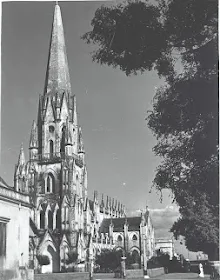As promised in one of my previous blog post, starting to write a series on enchanting, captivating and magical B&W days of Chennai.
I have 300 odd photos of Madras shot during our colonial days. I tripped on this while browsing. I am sure you all would enjoy, the cleaner, less polluted, plastic free, traffic free Chennai.
I consulted with my dad to verify the name of the places, few he was able to, yet there are some photos which he was not able to recognize.
I am very sure these photos would make us all wish for a time machine, to go back to those good old days, take some photos and of course be back. Who can even imagine a day without our beloved AC and laptops and tablets. But every photographer, every history lover, every architect would jump for such an opportunity.
Feel free to show these photos to your parents/grand parents who might fondly recall few of these places. Majority of the photos belongs to early 1900s, even our grand parents might not have born. But, people who were born before independence would definitely have a taste of this Madras life.
Now time for photos, the name, the place and a brief about the place.
Have a jolly ride to those glorious, carefree days at Chennai!
Let me start from my place...
 |
| Chepauk Palace was the official residence of the Nawab of Arcot from 1768 to 1855. It is situated in the neighbourhood of Chepauk in Chennai, India and is constructed in the Indo-Saracenic style of architecture. It currently functions as the PWD - Secretariat |
 |
| Chettinadu palace; This palace is still there inside the Chettinad Vidyashram school campus in R.A.Puram; my son who studied there, still marvels at the sheer magnificance of the building and he recalls with so much pride, he having lunch along with his friends at Meena Aunty's (the founder and the current Chettinadu queen) palace. |
 |
| Parade ground, Fort. St. George.
Fort St George (or historically, White Town) is the name of the first English (later British) fortress in India, founded in 1644 at the coastal city of Madras, the modern city of Chennai. The construction of the Fort provided the impetus for further settlements and trading activity, in what was originally a no man's land. Thus, it is a feasible contention to say that the city evolved around the fortress. |
 |
| Sri Parthsarathy Swamy, Triplicane chariot festival. It was crowded even then... |
 |
| Bharathiar house, that's still present, though demolished and rebuilt at T.P.Koil street, exactly where I reside... |
 |
| Chepauk Stadium, which needs no introduction.... the match in progress and where are those cheer leaders gone? :) |
 |
| Vivekanandar illam... still there but rebuilt; popularly called Icehouse |
 |
| the sea, sand remains the same but men sporting Dhoti our traditional garb; an hard to see affair today |
 |
| Marina Beach 1944-governor Grant - duff named the promenades he created as marina. The three and half km long marina beach is one of the longest beach of the world |
 |
| Presidency College |
 |
| Parthsarathy swamy temple |
 |
| Queen Mary's College founded in 1915; first woman's college in the city and originally the residence of Lt. Col. Francis Capper in the mid 1800s. The building later housed a hotel before becoming a college in 1914. Known as the Capper House, the building was preserved as a heritage building. The building unfortunately was demolished to construct a new adminstrative office for the college known as the Kalaignar Maaligi, which is now called as Kalai maligai, as the political scenario in Chennai changed. Author's note: I am an alumini of QMC and English department functioned from the demolished building. Being an English litt student, I sat there, the musty smell and bats hanging at the back of the class rooms and the wooden staircase, still dear to my heart. Its sad to see the new white building instead of the yellow old ones. |
Triplicane Road; seems to be crowded even then but the streets broad and houses with tiled roof.
 |
| Boats in Buckingham Canal |
 |
| Madras Central, the canal, the bridge and the boat... picture perfect |
 |
| Central Station interiors |
 |
| Fort St. George and beach |
.jpg) |
Fisherman at Beach Road - Madras university. presidency building seen |
 |
| A serene singara chennai - Marina beach another sunny day |
 |
| Napier Bridge and bullock carts moving one behind the other |
 |
| Sri Parthasarathy temple, Triplicane. A resident of this place, I am surprised to see the size of temple pond, which now has become very very small, when compared to this... I remember during my childhood days, there was this huge tank with no water and we used to play cricket in the dried sand of the tank. Later the tank's sand was tiled and water was filled and an artificial very small pond remains. |
 |
| Pycrofts road, stands calm and slow paced contrary to how it remains today. The hub of textile showrooms. Every branded showroom that exists in India, has an outlet here. A smaller no bigger Ranganathan street. Very crowded. |
 |
| Triplicane high road; Whoa! if you stop the guy walking there and ask him how the road would look after 60 or 70 years, he would have no idea. No trace of trees. Full of mansions hotel, messes and pawn broker shops... |
 |
| A sketch from those days, capturing Fort St. George and the boats |
 |
| Big Wallajah Mosque, Triplicane |
 |
Boat Jetty, a view of Esplanade
will be continued, the next post would be on Mount Road a.k.a Anna Salai...
|















.jpg)











No comments:
Post a Comment